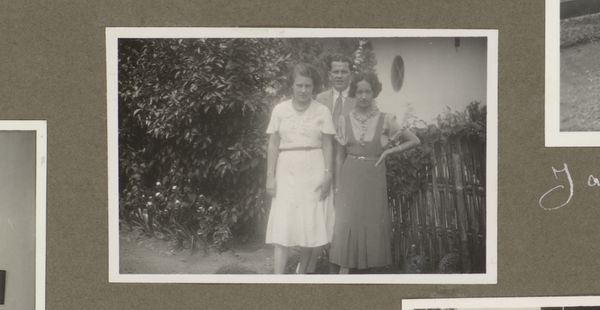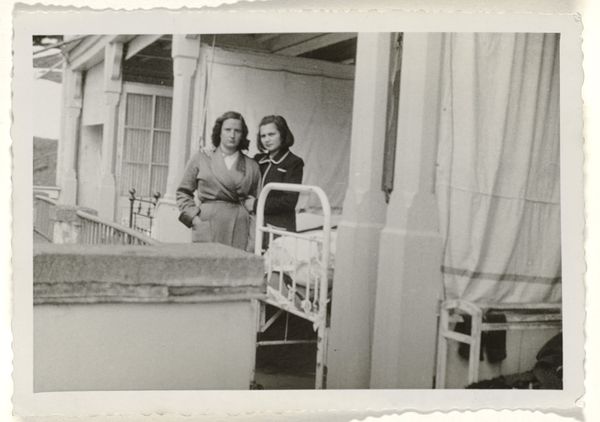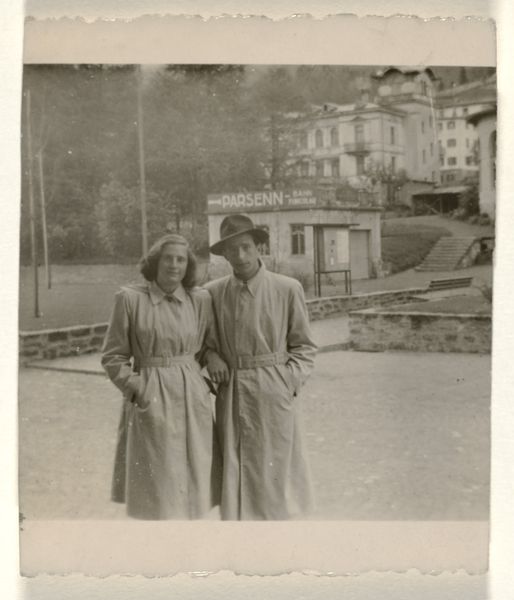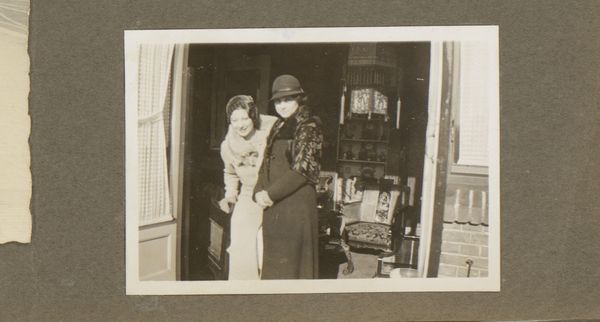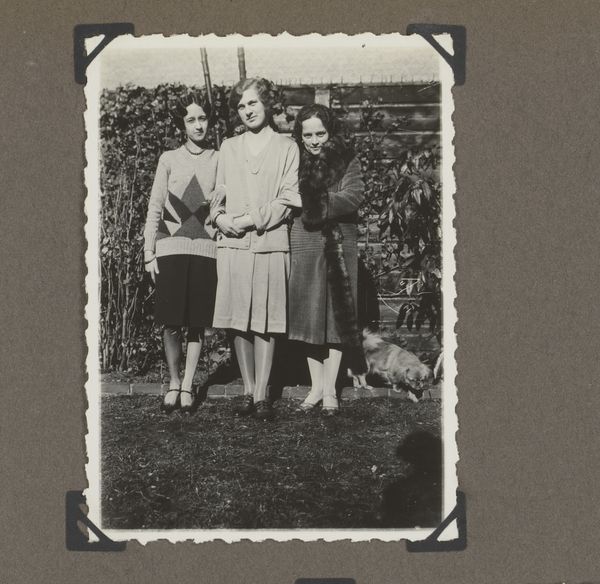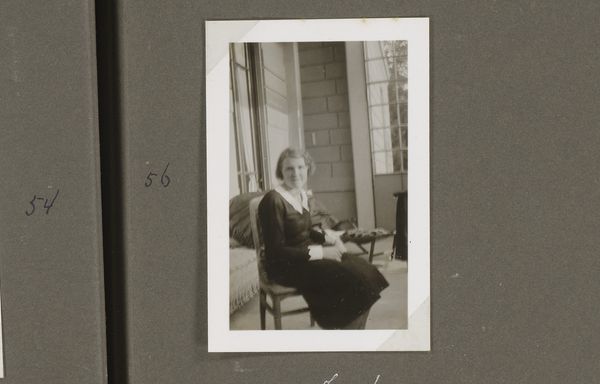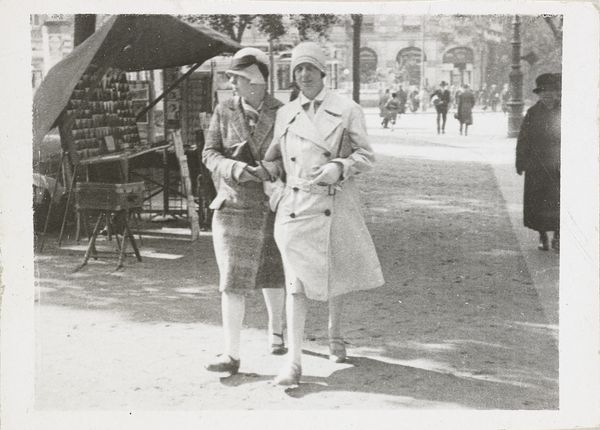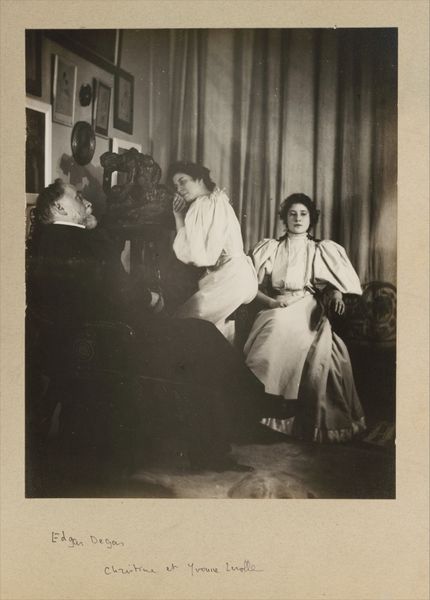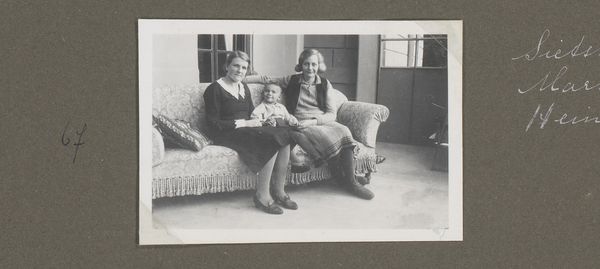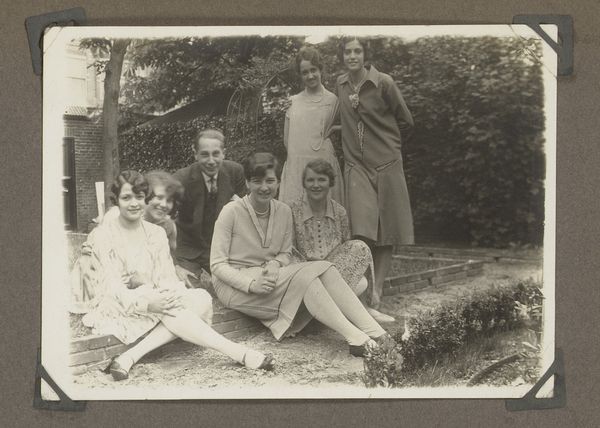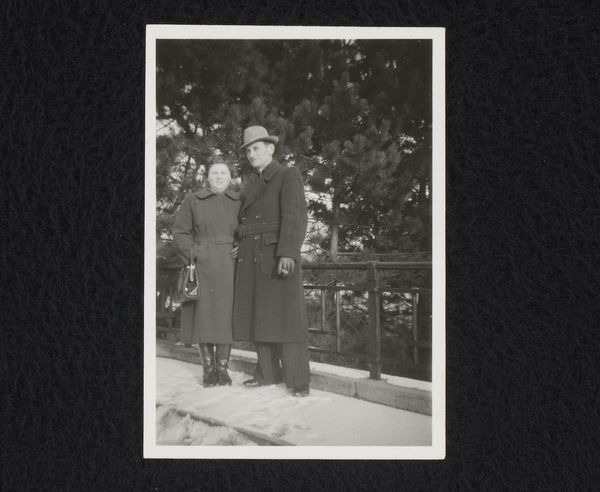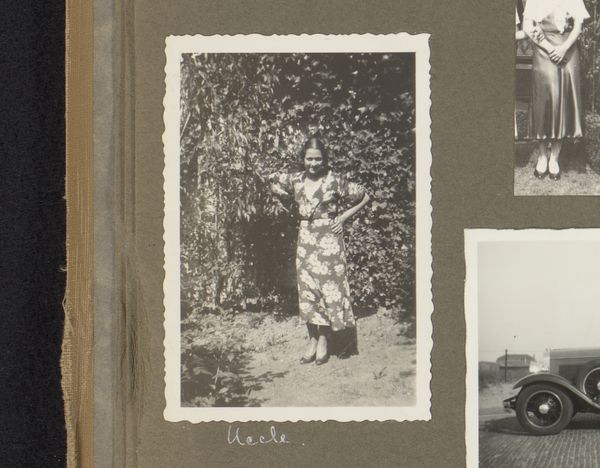
photography
#
portrait
#
17_20th-century
#
photography
#
historical photography
#
genre-painting
#
realism
#
monochrome
Dimensions: height 65 mm, width 85 mm
Copyright: Rijks Museum: Open Domain
Curator: This is a photograph entitled "Else Wachenheimer-Moos in met een vrouw in kleed met bontkraag op een terras," taken in 1936. It's a wonderfully composed, seemingly casual portrait, full of quiet observation. Editor: It does have a pensive air to it. Looking at it, I immediately sense the unspoken stories hanging in the air, like smoke after a fire. The monochrome emphasizes that feeling, stripping away the distractions of color, and focusing your attention on the texture, form, and expressions. Curator: The realism of the photograph grounds us in a specific moment, yet its formal composition elevates it beyond a simple snapshot. The placement of the women, the angle of the light—it all feels very intentional, despite its genre-painting theme of capturing an ordinary moment. It has that photo-booth candid feeling, if the photo-booth were nestled away on the side of an isolated cabin. Editor: That isolation, I think, is crucial. This was 1936. In Germany, Jewish people were feeling ever more isolated. And seeing a Jewish woman like Else Wachenheimer-Moos portrayed with such a visible vulnerability… I immediately connect this image with issues of identity, gender, and the precarity of life under fascism. What appears ordinary becomes profoundly charged. Curator: Absolutely, context is everything. But isn’t there something beautifully universal, too, in this image? A certain intimacy, perhaps tinged with sadness or fatigue? Like the fleeting beauty in a dream you cannot grasp fully upon waking. To consider it solely through a socio-political lens, though vital, risks missing its more ambiguous nature. It strikes me as an attempt to create space, not simply to represent the confined spaces allotted by oppressive power. Editor: But is such ambiguity not a luxury often unavailable to marginalized individuals, who are forced to inhabit highly visible, politicized spaces whether they want to or not? I think the tension between interiority and visibility here is precisely where the photograph's power lies. They aren’t simply sitting—they are _situated_. Curator: Well said. That contextual positioning allows for seeing all this weight alongside, not instead of, a more personal seeing. Else's companion in this picture is truly anyone sitting down next to her. Editor: Right, we come to understand photographs by understanding what's framed within them, but equally so, by thinking deeply about the frame of historical and cultural contexts they enter, long after the shutter clicks. Curator: In viewing photographs from this era, like this picture here, the image transforms into a potent reminder to seek out each sitter's experience within larger, historic, circumstances. Editor: Exactly. This photograph encapsulates how social history nestles itself within the intimate corners of individual lives, turning quiet moments into powerful dialogues across time.
Comments
No comments
Be the first to comment and join the conversation on the ultimate creative platform.
